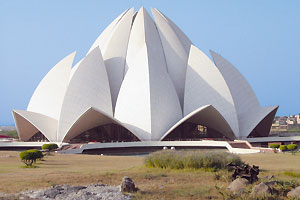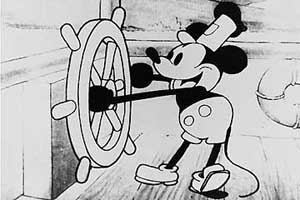India is located in the southern part of Central Asia, in a region named the Indian subcontinent. It has a land area of over 3,200,000 km2. It is bounded by Tibet, China, Nepal and Bhutan in the north; Myanmar, Bangladesh (which forms an enclave inside India) and the Gulf of Bengal in the east; the Indian Ocean in the south; Pakistan in the northeast and the Arabian Sea in the west.
It is the second most populated country in the world after China, with around 1.1 billion inhabitants.
India is a federal parliamentary republic made up of 28 states and seven federal territories. The present constitution came into force in 1950. The President is the head of state, while the Prime Minister holds executive power, and is designated by the political party which holds a majority in parliament. The current President of India is Abdul Kalam and the Prime Minister is Manmohan Singh.
The parliament is bicameral. The Upper House (of senators) is called the Rajya Sabha and the Lower House (of deputies) is named the Lok Sabha. The capital is New Delhi, which is within the limits of Delhi, one of the most populated cities in the country along with Bombay, Calcutta, Madras and Bangalore.
Its official languages are Hindi and English, however a large number of dialects and other languages are used. Its currency is the Indian Rupee. The main religion is Hinduism which is practiced by around 80% of the population.
Geographic Features
There are three identifiable regions in India from the north to the south: the region at the base of the Himalayas (the highest mountain range in the planet, with an average height of 6,000 metres) with a length of 3,000 km; the Indo-Ganges Plain (named after the Indus and Ganges rivers) and the Decan Plateau. The climate is dominated by the monsoons (tropical winds). There is a warm and dry season which lasts 8 months, and another season of intense rain.
Its rivers are grouped into two main basins: the Himalayan (the Ganges, the Brahmaputra and the Indus); and the Decan (the Godovari, the Krishna and the Cauvery). In the north, the Narmada and Tapti tivers flow towards the Cauvery river.
The economy
India has had one of the fastest growing economies of recent years. A middle class with the buying power of 300 million consumers has appeared, as well as a new generation of businesspeople who have begun to compete in international markets.
Automotive production, chemistry-pharmaceuticals and information technology, especially software, are the most dynamic industries. Around 150 technological multinationals have set up research centers in India. The Asian Silicon Valley is in the city of Bangalore.
Nevertheless, the most important economic activity is agriculture, (two thirds of the population is rural) mainly based on the cultivation of cereals such rice, wheat, maize and millet known as ragi. Tea, nuts, sugarcane, cotton, tobacco, jute, coffee and rubber are also produced.
There is a large amount of cattle, but milk production is low. The consumption of beef is prohibited, as cows are considered sacred in Hinduism.
Around 25% of the population lives in poverty.
Historical Outline
India arose out of the meeting of two cultures: the civilization located in the Indus Valley, which experienced a golden age between 2500 and 1800 B.C.; and the Aryans, an Indo-European people which colonized Northern India from approximately 1500 B.C. onwards. The Aryans imposed their language, Sanskrit; their religion, the foundation of Hinduism; and the hierarchical organization of society into castes. India was later invaded by the Persians in the 4th Century B.C. and Alexander the Great between 327 and 325 B.C. It also formed part of the Mauryan Empire between the 4th and 2nd Century B.C. and the Guptan Empire between the 4th and 6th Century A.D.
After this India experienced five centuries of Muslim hegemony.
The Portuguese sailor Vasco de Gama arrived in Calicut on the African Coast in 1498. Portuguese factories were established.
Baber founded the Mongol Dynasty in 1526 which held dominance over India for one and a half centuries.
The British and French East India Companies were founded in 1600 and 1664.
The Treaty of Paris left France with five factories in 1763. The British kept Bombay, Madras and Bengal.
India was annexed by the British Crown in 1858, and Queen Victory was crowned Empress of India in 1876.
India’s independence was proclaimed in 1947, but its territory was divided into two states: The Indian Union, with a Hindu majority; and Pakistan, with a Muslim majority.
The first to hold the position of Indian Prime Minister was Jawarahal Nehru between 1947 and 1964.








